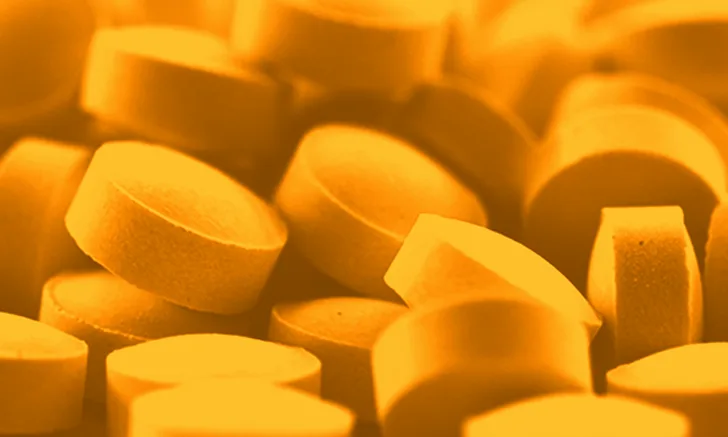Ivermectin
Adesola Odunayo, DVM, MS, DACVECC, University of Florida

Ivermectin is a macrocyclic lactone (ML) used to treat parasitic infections in dogs and cats.1
Overview
The lipophilic properties of MLs enable different routes of administration (ie, oral, cutaneous, injectable).2,3
As GABA agonists, MLs stimulate presynaptic release of GABA and increase its binding to postsynaptic receptors.
It is thought that MLs bind to glutamate-gated chloride channels in the central nervous system (CNS), resulting in hyperpolarization of the neurons.4
Nematodes utilize GABA as their primary neurotransmitter, and prolonged stimulation of GABA release can lead to neuromuscular blockade, paralysis, and death.3
In mammals, MLs have low neurotoxic properties, as they do not readily cross into the brain of mammals (except under certain circumstances—see Toxicity).
Ivermectin is largely excreted in feces as an unmetabolized parent compound.
Toxicity
Clinical signs of toxicity include ataxia, mydriasis, altered mentation, hypersalivation, vomiting, blindness, retinopathy, tremors, seizures, bradycardia, and/or respiratory depression.
With acute intoxication, signs may occur within a few hours.
In animals being treated daily (eg, for demodicosis), clinical signs may occur after several days of ivermectin treatment.1
Ivermectin is especially toxic when administered to dogs with a homozygous mutation in the multidrug resistance gene (ABCB1-1Δ, formerly MDR1) at a dose higher than 0.1 mg/kg.5,6
The absent P-glycoprotein allows the influx of ivermectin into the CNS.7
Collies are overrepresented, but Australian shepherd dogs, Shetland sheepdogs, and other herding breeds may harbor the mutation, making them susceptible to ivermectin and other drugs.8
Dogs without the P-glycoprotein abnormality can tolerate ivermectin at doses as high as 2.5 mg/kg before clinical signs of toxicity are seen.9,10
Young animals may be susceptible to ivermectin toxicosis because of an immature blood–brain barrier.
Cats are thought to tolerate doses of 0.2-1.3 mg/kg, although toxicity has been reported in kittens at lower doses.1,11
Toxicity can occur when ivermectin is administered topically, orally, or parenterally (ie, IM, IV, SC) or ingested through feces of treated horses, cows, or pigs.
Diagnosis
History of administration or inadvertent ingestion of ivermectin is important in diagnosing toxicity.
Ivermectin concentrations in the brain are the most important determinant of toxicity.1
Can also be detected in blood, liver, or adipose tissue, but there is little correlation between concentration in the blood and development of clinical signs
Testing can be conducted for the ABCB1-1Δ gene mutation in animals that develop clinical signs after ivermectin administration.
CBC, serum chemistry profile, and urinalysis results typically note nonspecific changes (eg, hemoconcentration, prerenal azotemia, hypoglycemia, elevations in liver enzymes) but may be helpful.12,13
Respiratory acidosis may be present secondary to hypoventilation.
Treatment & Prognosis
There are no specific antidotes for ivermectin toxicosis.
Animals with oral exposure should be properly decontaminated when possible.
If oral ingestion occurred within 1 to 4 hours of presentation, vomiting should be induced with apomorphine (0.03 mg/kg IV or subconjunctivally) or hydrogen peroxide (dogs only; 0.5 mL/kg PO).
Ivermectin undergoes enterohepatic recirculation in the GI tract, so multiple doses of activated charcoal (1-2 g/kg PO once with or without cathartic; subsequent doses without cathartic at 0.5-1 g/kg 3 times a day) may be beneficial.
Electrolyte concentrations, especially sodium, should be monitored when activated charcoal is administered.14
Animals with topical exposure should be washed with mild dishwashing detergent before additional treatment is initiated.
Crystalloid fluid therapy should be provided for maintenance and any ongoing losses.
In animals with hypoventilation (pCO2 >60 mm Hg), endotracheal intubation and mechanical ventilation should be initiated.
Referral to a 24-hour facility may be required for ongoing support of a patient that requires mechanical ventilation.
Physostigmine, an anticholinesterase agent, may be administered at 1 mg/dog IV twice a day but generally causes only temporary improvement in neurologic status.15
Picrotoxin, a GABA antagonist, may improve neurologic status but also may contribute to seizure activity and should be used cautiously.12
Recently, use of IV lipid emulsion has been described for treatment of animals with ML toxicity, including ivermectin.16-20
IV lipid emulsion is effective in humans with lipid-soluble drug toxicoses and appears to be beneficial in animals with ivermectin toxicosis.16-20
The recommended dose of a 20% solution is a 1.5-mL/kg bolus administered over 15 minutes, then 15 mL/kg administered over 60 minutes.21
The dose can be repeated if clinical signs of toxicosis recur.
IV lipid emulsion has reportedly reversed blindness and accelerated recovery in affected dogs.16
Mildly to moderately affected animals have a fair-to-good prognosis for recovery with aggressive supportive care.
CBC = complete blood count, CNS = central nervous system, GABA = gamma-aminobutyric acid, GI = gastrointestinal, ML = macrocyclic lactone, pCO2 = partial pressure of carbon dioxide